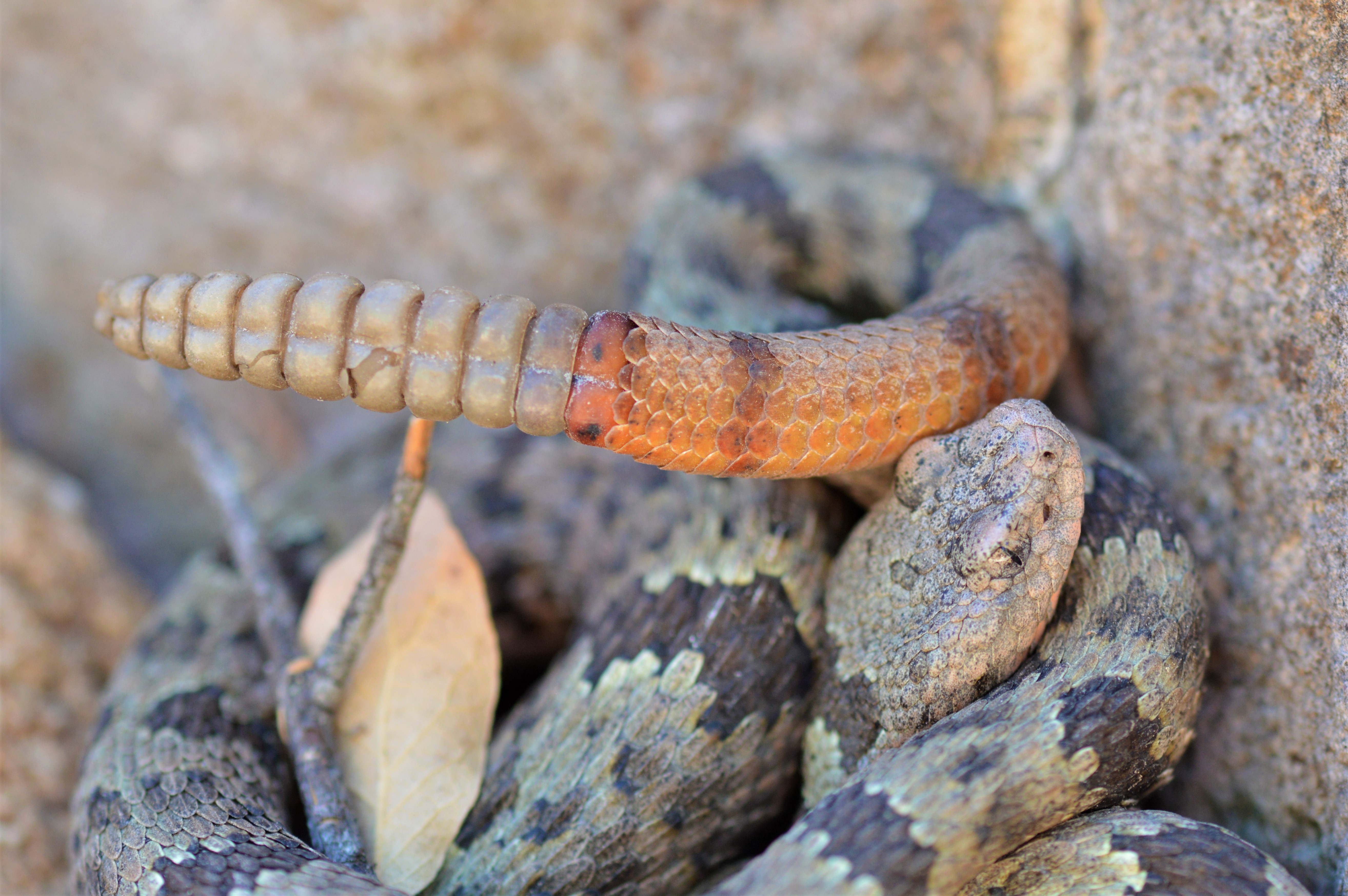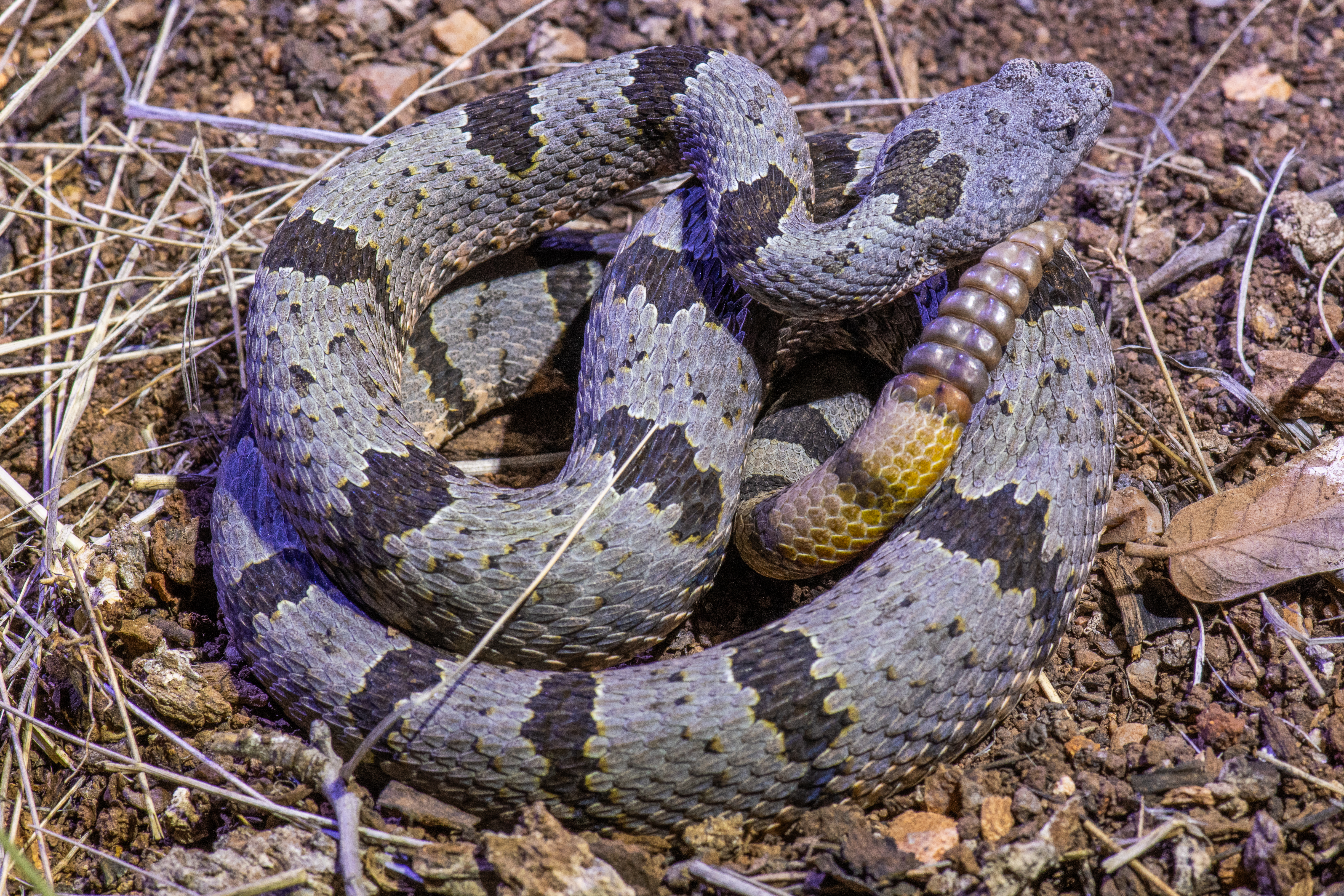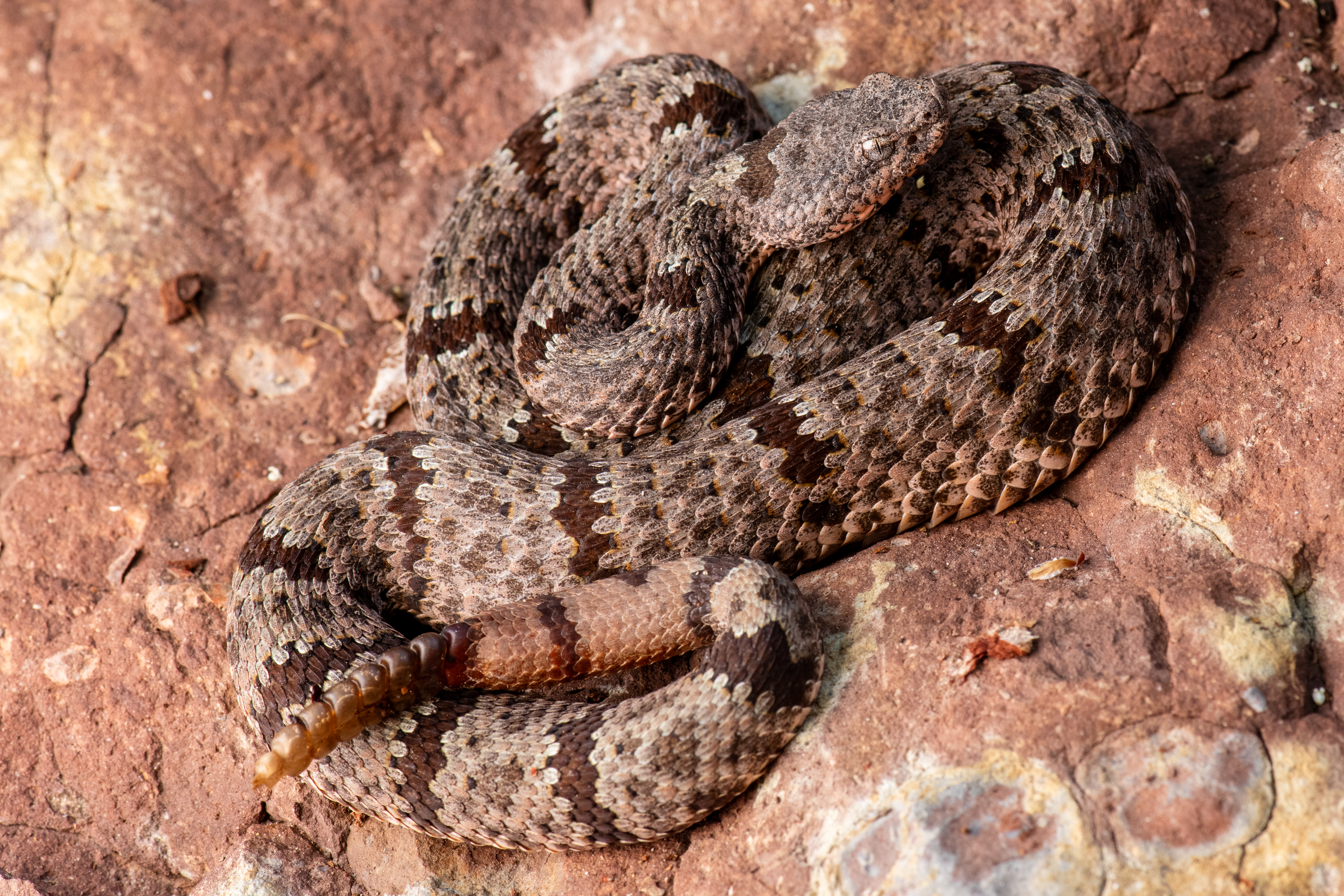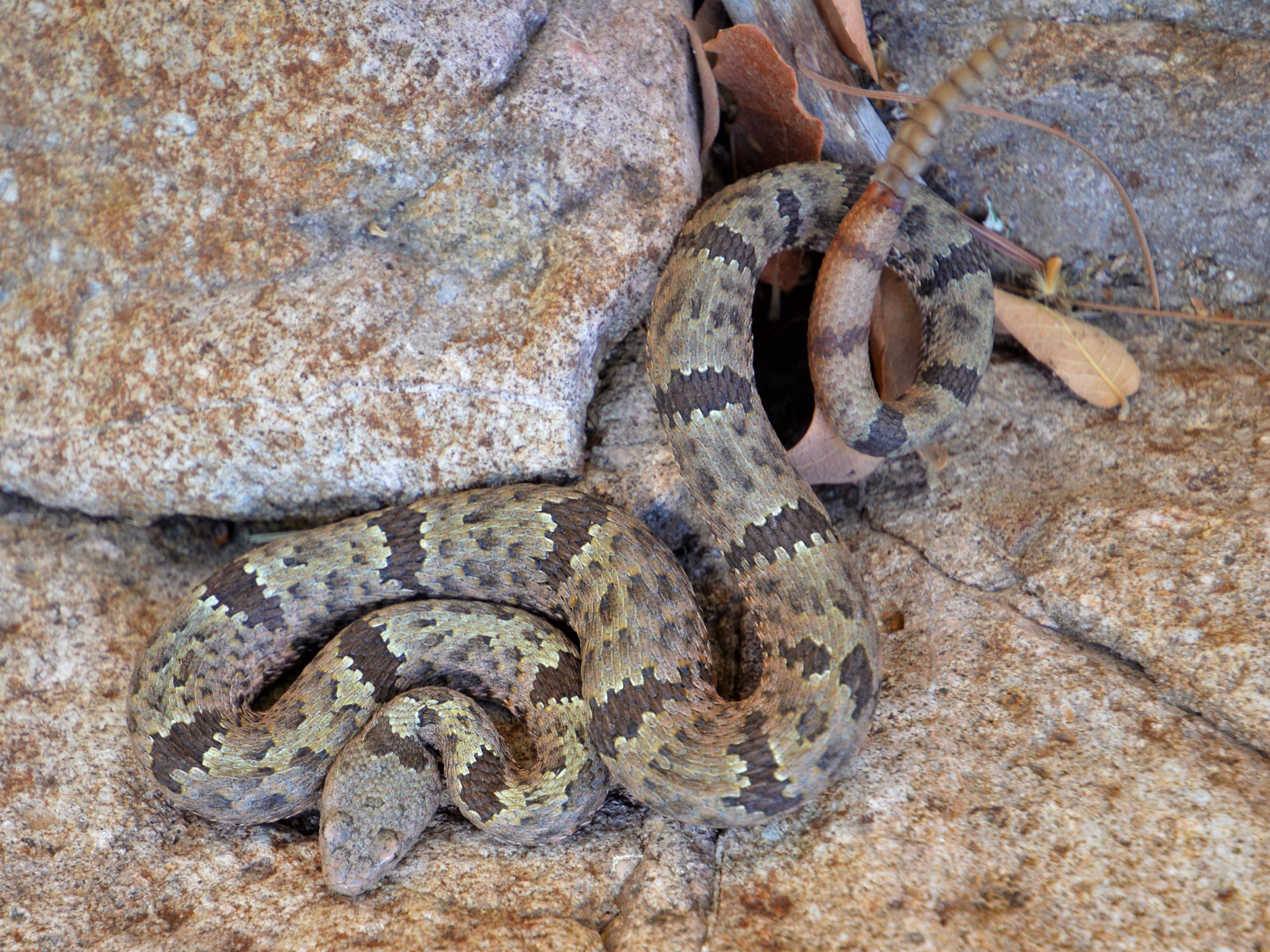Rock rattlesnake (Crotalus Lepidus)

The rock rattlesnake exhibits significant variation in coloration and pattern across its range, but there are some general characteristics that can be observed. Typically, adult rock rattlesnakes have a base color that ranges from light gray or tan to yellowish-brown or reddish-brown. They often have a series of dark, irregular crossbands or blotches running along their bodies, which may be more prominent in some individuals than in others. The pattern can help them blend into their rocky surroundings, providing camouflage and protection.
In terms of size, adult rock rattlesnakes usually measure between 2 to 3.5 feet (0.6 to 1.1 meters) in length, with larger individuals occasionally reaching up to 4 feet (1.2 meters). They have a stout and muscular build, with a distinct triangular-shaped head and vertical pupils. Like other rattlesnake species, they possess heat-sensing pits located between their nostrils and eyes, allowing them to detect the body heat of warm-blooded prey.
Rock rattlesnakes are primarily ambush predators, patiently waiting for prey to pass by before striking with precision. They have a diet consisting mainly of small mammals, such as mice, rats, and ground squirrels, but they may also consume lizards and occasionally birds.
As their name suggests, rock rattlesnakes are adept climbers. They can traverse steep inclines and navigate rocky terrain with ease, using their strong muscles and specialized scales on their belly to grip and anchor themselves to the surfaces they climb.
Similar to other rattlesnake species, rock rattlesnakes possess a rattle at the end of their tails. The rattle is composed of interlocking keratin segments and serves as a warning device when the snake feels threatened. When agitated, they can shake their tail rapidly, producing a distinctive rattling sound to deter potential predators or intruders.
The conservation status of the rock rattlesnake varies depending on the specific population and habitat conditions. Like other rattlesnake species, they face threats such as habitat loss, fragmentation, and human persecution. Preserving their rocky habitats and minimizing human-wildlife conflicts are important for their long-term survival.
Encountering a rock rattlesnake in the wild should be approached with caution and respect. It is advisable to give them space and avoid any interaction or disturbance. If bitten, seeking immediate medical attention is crucial.



